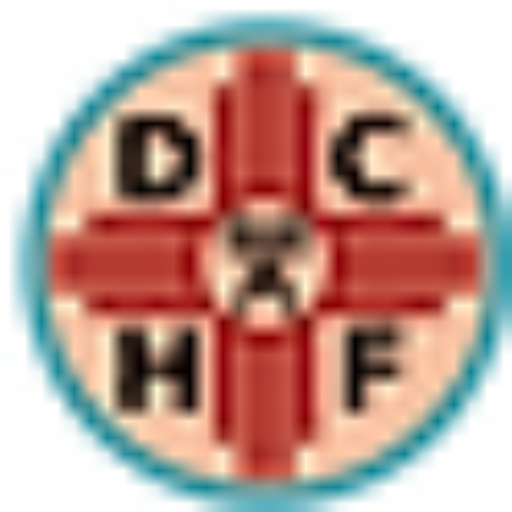Feel free to browse the talks or you can view an index into the talks here. The index will route you to the specific talk you are interested in.
Again, Again! Why do some modes work better? – Kristen McIntyre, K6WX
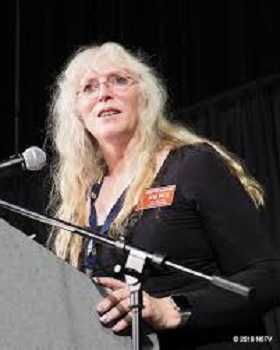
About K6WX:
Kristen McIntyre, K6WX, has been interested in radio since she was about 5 years old. She started in Amateur Radio in 1979 getting her ticket while at MIT.
Kristen has worked in many diverse areas from analog circuit design to image processing to starting and running an ISP. She is currently working at Apple in Core Networking, and spent many years at Sun Microsystems Laboratories where she was researching robustness and emergent properties of large distributed computer systems. She is a long time denizen of Silicon Valley and has worked at or consulted for many of the usual suspects.
Kristen is an active ham and loves to chase DX on HF with her Elecraft K2 which she built while visiting her mother in Florida.
She is ARRL First Vice President, former Pacific Division Director, past president of the Palo Alto Amateur Radio Assoc., past Q&A columnist for Nuts and Volts magazine, and is active in many local clubs. Kristen was recently inducted into the CQ Amateur Radio Hall of Fame. She is also an Instrument Rated Private Pilot.
Abstract:
Ever wonder why CW works better than SSB, and SSB better than FM? For that matter, why is PSK-31 pretty good, but modes like JT-65 and Olivia even better? It turns out that there are reasons for this founded in Information Theory, which began with a study of Morse Code. We’ll look at spectral power densities, information theory, the Shannon-Hartley theorem, noise cliffs, coding theory, maximum likelihood decoding, convolutional coding, self-synchronizing codes, and more. We’ll even take a look at Fisher information and its relation to physics. Join me and explore why some modes work better, not just in how we experience them, but how they are impacted by their relationship to information theory.
Ground is a Myth

About K6WX:
Kristen McIntyre, K6WX, has been interested in radio since she was about 5 years old. She started in Amateur Radio in 1979 getting her ticket while at MIT.
Kristen has worked in many diverse areas from analog circuit design to image processing to starting and running an ISP. She is currently working at Apple in Core Networking, and spent many years at Sun Microsystems Laboratories where she was researching robustness and emergent properties of large distributed computer systems. She is a long time denizen of Silicon Valley and has worked at or consulted for many of the usual suspects.
Kristen is an active ham and loves to chase DX on HF with her Elecraft K2 which she built while visiting her mother in Florida.
She is ARRL First Vice President, former Pacific Division Director, past president of the Palo Alto Amateur Radio Assoc., past Q&A columnist for Nuts and Volts magazine, and is active in many local clubs. Kristen was recently inducted into the CQ Amateur Radio Hall of Fame. She is also an Instrument Rated Private Pilot.
Abstract:
Ground is something you stand on, but in an electrical sense, the meaning is much less clear. When it comes to Hams and ground, things get really confused. We drive rods into the earth, but why? Let’s take a look at whether any of this makes sense, and what theory tells us about “ground”, and if it exists in any sensible way at all. We’ll talk about DC grounds, RF grounds, and even about gravity.
Crossbanding for HAM/SAR Groups – Harry Hall K5HTL

About K5HTL:
Harry is a trustee for the Cibola County Amateur Radio Club repeaters 444.950+ pl 100.0 La Mosca Peak 11K ASL, linked to 147.180+ pl 100.0, Allstar Node 599320 Echolink 886614 KE5FYL-R, 147.520 VARA FM Gateway (QRT) all located in Grants at the main club site building, and the 145.010 2M Packet Digia Repeater OSO Ridge see QRZ under KE5FYL for local repeaters in Cibola County.
He Manages the clubs new online web site at HamClubOnline.com Amateur Radio Club Management System under the initials CCARC.
Harry is the Communications/SAR Leader for the Cibola County Emergency Manager Dustin K5EMO, primary repeater 146.980- pl 141.3 La Mosca Peak 11K ASL linked to the 444.975+ pl 67.0 K5EMO located in Grants at the Cibola County Regional Dispatch Center 911 Public Safety Answering Point for all public safety in Cibola County.
He is also the ARRL Government Liaison for Cibola County yes, they have such a position for ham amateur radio volunteers Local Government Liaison (arrl.org) and a member of the Mckinley County SAR for communications only Welcome Page | McKinley County Search and Rescue / ARES
Abstract:
We will explore what Crossbanding is, how it works, what equipment is needed, how to set up, and the applications of crossbanding for HAMS and SAR Groups.
Felons, Fees, and Licensing Trends – Robert Rose AA3RR

About AA3RR:
Bob Rose spent over 45 years in service to the country. After 20 years on active duty, Bob retired from the US Army where he served as a Morse Code Intercept operator and EW/SIGINT Chief.
Following a 23-year career as an Intelligence Specialist on the Army Staff at the Pentagon, Bob retired again and after a two-year part time stint with an agency that shall remain nameless, Bob left government service for good in 2013.
Bob was granted his Novice license (WN4FUI) in 1973. In 1994, Bob became a VE with the Laurel VEC with whom he has served as a Volunteer Examiner, a team leader from 2000 through 2009, and as a Regional Coordinator since 2010. He currently manages over 20 VE teams in the 5th VEC Region.
Bob currently lives in Prescott Valley, Arizona with his son who is also a Laurel VEC VE.
Abstract:
This presentation will look at the CURRENT FCC licensing trends that address:
-
- Felons – Why is there a felony question – how we got here, the past and the present, grant rate, categories of pending hell
- Fees – The past and the present.
- Emerging Trends – 2000 to the present. Restructure, elimination of code, 2015 – a peak year, COVID, ham vs GMRS.
A Simple EMP Primer for EMCOMM Stations – Brian Britt KG5WED

About KG5WED:
Brian holds a General Class License.
He is a former USAF ICBM Technician with experience in the Titan, Minuteman, and Peacekeeper (MX) ICBM missile systems, as well as prototype missile systems development and testing. This also required knowledge of the methods, maintenance, and equipment required for hardening these systems against Electro-Magnetic Pulse damage in the event of a nuclear attack.
Abstract:
A detailed breakdown of the different forms of Electro-Magnetic Pulse, the effects on Amateur Radio station equipment, and the protections required to keep that equipment functional after the various types of EMP events.
Navajo Code Talkers – Herb Goodluck N7HG
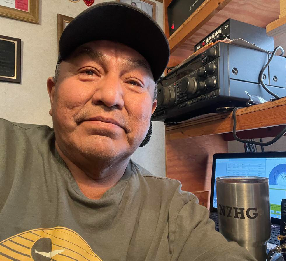
About N7HG:
Herb is the QSL Manager for Navajo Code Talkers Special Event Station N7C and resides in Lukachukai, Navajo Nation, Arizona. He is the son of a Navajo Code Talker.
He spends his time sharing his late father stories and the legacy of the Navajo Code Talkers in the South Pacific theater during WWII conflict.
Abstract:
Herb will talk about the past indigenous people’s background, and the sacrifices the “Navajo Code Talkers” made, plus a bit of how the code was developed. He will explain how the code was used, how the code was a code within a code, and explain how the letters of the alphabet are used from Navajo to English. He will use stories from his late father to illustrate throughout the presentation.
Get Involved in Search and Rescue – the many ways to help – Ron Nelson NR5ON

About NR5ON:
Ron has been involved with radio communications for New Mexico Search and Rescue (SAR) for over a decade through the Santa Fe SAR Group and the New Mexico SAR Council Board.
He has an Amateur Extra license and is a member of the Santa Fe Amateur Radio Emergency Service radio club since 2011.
He strives to make his presentations relevant, clear, and interesting.
Abstract:
There are many ways for hams to help with Search and Rescue. Maintaining repeaters, conducting ham license classes and exam sessions, programming radios for SAR teams, advising on radio equipment and its proper use, serving as a relay from home, or joining a team and providing Comms from Incident Base in the field. These efforts can be both rewarding and improve the safety and efficiency of SAR missions.
This talk will provide an introduction to Search and Rescue in New Mexico and describe a variety of roles for hams, what is needed, how to get started, and examples of the challenges and rewards it can provide.
TRLog for Linux: A Classic Contest Logger Re-Written for Modern Platforms
– Wayne Greaves – W0ZW
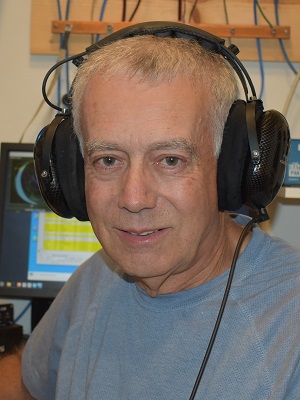
About W0ZW:
Wayne Greaves, WØZW, was first licensed as a Novice in 1970. Subsequently he passed the Advanced class license and then the Extra class – all before graduating high school. He credits an enthusiastic high school radio club for developing his interest in amateur radio, which has lasted over 50 years.
Wayne received a BS degree in electrical engineering from the University of Missouri – Rolla (now Missouri Univ. of Science & Technology) in 1977. After college his ham radio activities went on hold for some two decades until his interest rekindled around 1999.
His current interests are in CW contesting and DXing. After restarting in New Mexico from zero in 2002, his confirmed DXCC total (mixed) is currently 292 entities (as of 8/6/2024).
Abstract:
This presentation explores the modern day use of one of the original contest logging applications, TRLog. TRLog was originally developed for DOS-based computers by Larry “Tree” Tyree, N6TR, beginning in 1989. TRLog continued to be updated at least through 2006 with version 6.83. However, long before this time Windows-based contest loggers had taken over and become the norm in most shacks. Subsequently, TRLog for DOS fell out of mainstream use. In a resurgence of sorts it was ported (with the permission of N6TR) to the Linux operating system by Kevin Schmidt, W9CF in 2011. Although TRLog is still in use by a small dedicated group of contesters, today the defacto contest logging application is undoubtedly N1MM+. Given the popularity of N1MM+, why would anyone consider using TRLog instead?
This presentation attempts to answer that question. The following topics will be covered:
-
- What is a contest logger?
- What is Linux?
- Why use TRLog for Linux when everyone else uses N1MM+?
- How to install TRLog for Linux.
- How to configure TRLog for Linux.
- How to operate TRLog for Linux.
- Resources for further study.
Intro to Digital Voice Modes (D-STAR, DMR and YSF) – Paul Bouthillier KB0WMA and John Betz II KI5YIF
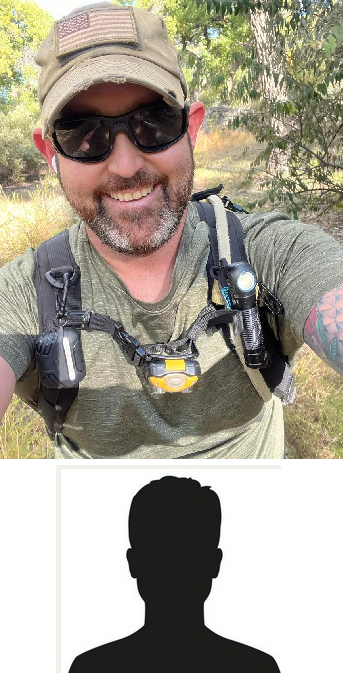
About John Betz KI5YIF (top):
John was first licensed as a Technician in October 2022. Born and Raised in Rio Rancho NM. He upgraded to General in February 2023 and then upgraded to Amateur Extra in April 2024. His Ham Interests are HF through 440Mhz ( Both Analog and Digital modes), D-STAR, DMR, YSF, FT8, Wires-X, AllStarLink and EchoLink
(openSPOT, Raspberry Pi Hotspots, etc.). He is a volunteer member of nmscares.org (SCARES). He Builds anything and everything and believes that education is learning what you didn’t even know you didn’t know.
About Paul Bouthillier KB0WMA: (bottom)
Paul ws first licensed as a Technician in May 1996 in Denver Colorado, Moved to Albuquerque, New Mexico in 2001. Upgraded to General in November 2023 and then upgraded to Amateur Extra in April 2024. His Ham Interests are HF through 440Mhz( Both Analog and Digital modes). He owns and operates a 24/7 YSF Reflector YSF Reflector ID: US-NM505-KB0WMA. He also operates on D-STAR, DMR, YSF, FT8, Wires-X, AllStarLink and EchoLink (openSPOT, Raspberry Pi Hotspots, etc.). He is a volunteer member of Bernalillo County ARES (BCARES).
Abstract:
This presentation will explore the background of D-STAR, DMR and Yaesu System Fusion. We will look at options for personal operations, DMR-focused hotspot setup, more D-STAR and YSF info, and portable operations.
The presenters will share what they have learned while using digital modes.
High Altitude Nuclear Electromagnetic Burst– Dave Casler KE0OG
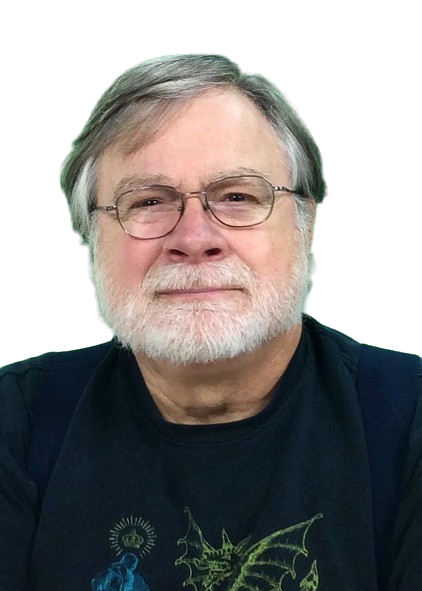
About KE0OG:
Dave Casler, KEØOG, a ham for more than 49 years, has degrees in mathematics and electrical engineering. After he left the USAF, he worked in aerospace at Northrop, Lockheed Martin, and IBM. He is the author of the “Ask Dave” column each month in QST. He has a YouTube channel of the same name with over 1100 videos. Dave’s training videos for Tech, General, and Amateur Extra have been adopted by ARRL as their training videos which match the ARRL license manuals
Abstract:
Covers history, the nature of the pulses (E1, E2, and E3), and the actual level of danger to hams. While it should be considered, it is not as untameable as folklore would have it.
History of the Vibroplex Original – Dave Casler KE0OG

About KE0OG:
Dave Casler, KEØOG, a ham for more than 49 years, has degrees in mathematics and electrical engineering. After he left the USAF, he worked in aerospace at Northrop, Lockheed Martin, and IBM. He is the author of the “Ask Dave” column each month in QST. He has a YouTube channel of the same name with over 1100 videos. Dave’s training videos for Tech, General, and Amateur Extra have been adopted by ARRL as their training videos which match the ARRL license manuals
Abstract:
Covers history and motivation, early attempts, and patent history. A patent I found would indicate the “original design” is actually a bit older than we all thought.
An Open Forum on Various Wire Antennas, the Pros and Cons – Gilbert Gray N2GG
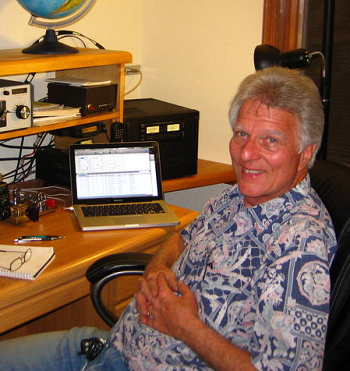
About N2GG:
Gil grew up in southern California with an active interest in science, electronics and ham radio. He was first licensed in 1958. In 1961 he began working for Pacific Telephone & Telegraph Company, while still a student at South Gate High School, near Los Angeles.
After graduating from college, Gil spent most of his career in telecommunications engineering. At the end of 1987 he retired as a Senior Engineer from Bell Communications Research (formerly Bell Labs). He then began exploring spirituality and metaphysics. This led him to a new career as owner of a wholesale business providing products for conscious living to stores throughout the United States.
In the early ’90s Gil discovered New Mexico. In 2000, he and his wife, Danna Loori, K2JOY, moved to a small farm in Belen, NM. They are now, mostly, retired enjoying Ham Radio, Travel and Square Dancing. Gil’s other interests include: RV travel, playing five-string banjo and guitar, and creating a more autonomous lifestyle. To this end, a 7.4 KW solar power plant is now functioning at their home.
Gil holds an Extra-class ham-radio license, is a Life Member of the American Radio Relay League, is a registered instructor with the ARRL, enjoys “rag chewing” and chases DX on CW & SSB. A pet love is antennas, particularly wire antennas of all kinds.
Abstract:
This presentation will look at the advantages and disadvantages of various wire antenna types. There will be a discussion and recommendations on antennas for Limited Space and HOA’s. An open discussion on your particular antenna questions will be answered.
A lot has changed in 10 years. Are you considering a new radio? – Rob Sherwood NC0B
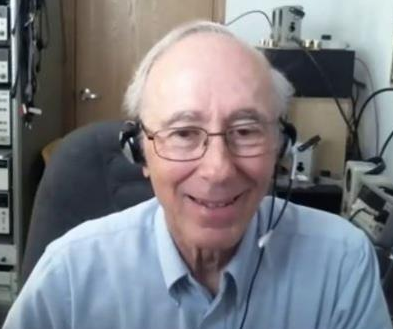
About NC0B:
Rob was first licensed in 1961 with novice license WN8ADB at age 14 in Cincinnati, Ohio. Upgraded to general class about two months later as WA8ADB. Operated as a portable Zero in mid-70s out of Colorado. Became WB0JBP in late 70s or early 80s. Was briefly KC0ZV, an advanced class. Became NC0B, extra class, around 1988.
Founded Sherwood Engineering in 1974, offering Drake upgrades. He started testing transceivers in 1976, which now total over 100.
Abstract:
Choosing a new rig is both subjective and complex. This presentation will help you explore what you really need for your typical on-air day. How you interface with your radio, explore if your current radio is too old, look at modern radio architecture, and examine the features of top 25 rigs on the market today.
Earth-Moon-Earth (EME), a lifelong adventure – Ned Stearns AA7A
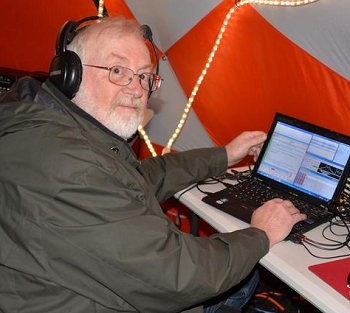
About AA7A:
Ned was first licensed in August 1963 at age 12 as WN8JWY. Ned currently lives in Phoenix, AZ and is active on all amateur bands up to 23 cm. He is active in DXing, contesting and VHF/UHF weak signal work.
He has been on 30 DXpeditions on all continents including four to Top Ten Needed DX entities (Kingman Reef 2000, South Sandwich 2016, South Georgia 2016 and Baker Island in 2018). He was also the first ever to accomplish DXCC on 11 amateur bands.
He is retired from General Dynamics where he was a Systems Engineer for 41 years. He is currently busy building several remote stations in AZ to expand his operating capability. He is also heavily involved in the development of remote systems for Island DXpeditions on the Radio In a Box (RIB) project.
He is a four-time past President of Central Arizona DX Association, a Director for the Northern California DX Foundation and has been the ARRL Southwestern Division Vice Director on and off since 2005. He was voted into the CQ Magazine DX Hall of Fame in 2020.
Abstract:
Ned will discuss his adventure which includes the creation of thirteen different EME systems over the course of his ham career. He will cover what inspired him to enter the game and will describe new technology that is used in modern EME systems and in making the most challenging of ham radio contacts.
Mysterious Shortwave Numbers Stations – Mike Langner K5MGR
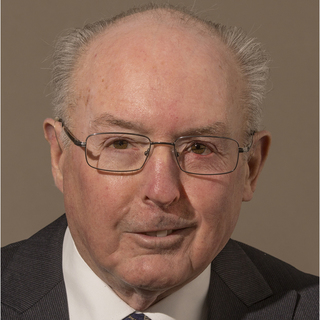
About K5MGR:
Mike is a retired broadcast station owner and lifetime career broadcast engineer. He holds the Amateur Extra, Commercial Radiotelegraph, and Commercial Radiotelephone licenses.
Currently he is the New Mexico inspector for the New Mexico Broadcasters Associations’ Alternative Broadcast Inspection Program, a program jointly sponsored by the FCC and the National Association of State Broadcast Associations in which when stations pass and compliance inspection by inspectors , stations are given a three-year exemption from random, luck-of-the-draw FCC walk-in inspections. This program helps keep our broadcast industry as voluntarily compliant as possible.
He is the Chair of the New Mexico Emergency Broadcast System. He has been an active ham since 1957!
Abstract:
Mysterious voices repeating numbers in the night. Secret coded instructions for spies 24 hours a day. Coded instructions for international crime syndicates. Messages for a master spy who infiltrated the CIA. Coded cyphers that brought down an airliner full of passengers. They’re at your fingertips on your shortwave receiver. Learn who’s behind these mysterious transmissions, past and present, along with recordings of these clandestine signals in war and peacetime. Photos of formerly secret sites, voices of the past and present, and names and photos of their most notorious users illustrate this engaging presentation about Spies On The Radio: Secret Numbers Stations.
How Ham Radio Started The Broadcast Industry – Mike Langner K5MGR

About K5MGR:
Mike is a retired broadcast station owner and lifetime career broadcast engineer. He holds the Amateur Extra, Commercial Radiotelegraph, and Commercial Radiotelephone licenses.
Currently he is the New Mexico inspector for the New Mexico Broadcasters Associations’ Alternative Broadcast Inspection Program, a program jointly sponsored by the FCC and the National Association of State Broadcast Associations in which when stations pass and compliance inspection by inspectors , stations are given a three-year exemption from random, luck-of-the-draw FCC walk-in inspections. This program helps keep our broadcast industry as voluntarily compliant as possible.
He is the Chair of the New Mexico Emergency Broadcast System. He has been an active ham since 1957!
Abstract:
Before there were commercial radio stations, consumer radios and lots of radio listeners, there were radio amateurs building modest amateur radio stations that would become the giants of broadcasting we know today. We’ll look at the pioneering amateurs whose work grew through the years to be today’s media networks and flagship stations, and we’ll learn the identities of many of the amateur radio operators who became some of our most popular and beloved entertainers. The intertwined pathways that split into Amateur Radio and commercial broadcasting are fascinating tales of technical discovery, personal bravado, genius, and insight. Join us for the story of how a mighty industry was launched in the basements and attics where early amateur radio stations held sway.
Ham Radio Messaging Made Easy – John Mocho KC5QOC and Ed Poccia KC2LM
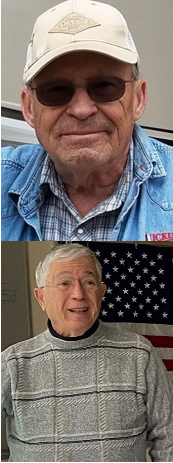
About KC5QOC (top):
John is a retired Agricultural Engineer, Honeywell Staff Engineer and Royal Healthcare Data Center Manager. John holds an Extra Class License and is currently President of the Caravan Amateur RAdio Club and is active in Bernalillo County ARES. John’s favorite amateur radio recreational modes are FT8,FT4,SSTV, and Winlink Emergency modes.
About KC2LM (bottom):
Ed is a retired teacher with experience at the Elementary, Middle School, Undergraduate and Graduate levels. While working at the middle school level, he had a ham station in his classroom operating HF SSB Voice and VHF Packet modes bringing ham radio into the curriculum. He has been a Ham Radio operator since 1961, currently holding an Extra Class License. His favorite recreational modes include; CW contesting, keyboard to keyboard modes and SSTV. He developed the New Mexico Packet Pals group last year in order to provide additional training and experience using Packet Radio for emergency communication.
Abstract:
Ham Radio operators are communicators getting the message through when all else fails. But, are you ready to perform that function? John and Ed have found new software that makes it rather EZ to do.
They will present some of these systems and give you an opportunity to try them. With the development of new software by the National Traffic System sending an ARRL RADIOGRAM has never been easier. The software for sending SSTV images, perfectly, has been reduced to a simple Drag and Drop procedure. A group from Arizona hams have set up a procedure for sending SMS messages to cell phones replacing the older SMS system that was taken down. Become a communicator at the Duke City Hamfest.
Rocky Mountain Ham Radio (RMHAM) Overview – Brian Mileshosky N5ZGT
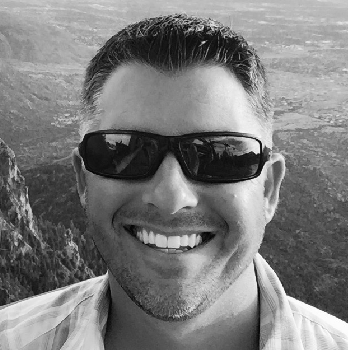
About N5ZGT:
Brian Mileshosky N5ZGT, of Albuquerque, New Mexico, is president of Rocky Mountain Ham Radio (New Mexico). He became an amateur radio operator 31 years ago, which led to his curiosity about electronics and RF, then his BS and MS degrees in electrical engineering with emphasis on RF/microwave engineering, followed by his career path in research and development of RF/microwave and other capabilities.
He is a life member of ARRL, served the ARRL as a board member and officer (Vice Director, Director, Vice President) for 13 years, organized the annual New Mexico QSO Party, and serves on the Grants Advisory Committee of Amateur Radio Digital Communications (ARDC) which awarded $6.7M in financial grants to amateur radio, educational, R&D, and scholarship focused organizations across the world in 2023.
Abstract:
RMHAM members and leadership will provide an overview of Rocky Mountain Ham Radio, its mission, its ongoing projects (New Mexico TechFest, RMHAM University, expansion and operation of its 5-GHz microwave network and DMR network, technical assistance and partnerships with other amateur radio clubs, and more), and how you can get involved from wherever you live in New Mexico or Colorado!
Rocky Mountain Ham Radio (RMHAM) 5-GHz Microwave Network Overview – Brian Mileshosky N5ZGT

About N5ZGT:
Brian Mileshosky N5ZGT, of Albuquerque, New Mexico, is president of Rocky Mountain Ham Radio (New Mexico). He became an amateur radio operator 31 years ago, which led to his curiosity about electronics and RF, then his BS and MS degrees in electrical engineering with emphasis on RF/microwave engineering, followed by his career path in research and development of RF/microwave and other capabilities.
He is a life member of ARRL, served the ARRL as a board member and officer (Vice Director, Director, Vice President) for 13 years, organized the annual New Mexico QSO Party, and serves on the Grants Advisory Committee of Amateur Radio Digital Communications (ARDC) which awarded $6.7M in financial grants to amateur radio, educational, R&D, and scholarship focused organizations across the world in 2023.
Abstract:
RMHAM members and leadership will provide an overview of Rocky Mountain Ham Radio’s 5-GHz microwave backbone/network which spans Albuquerque, New Mexico all the way up to Cheyenne, Wyoming and across Colorado’s western slope (with plans to expand it further). RMHAM’s network is a fully-managed infrastructure that enables partnering amateur radio organizations to facilitate or expand their capabilities (repeater operations, linking, and any IP-based application that is Part 97 compliant) for the benefit of the broader amateur radio community. Come learn about this network, the capabilities that it currently enables, how you can get involved in its planned expansion, and some of the tools and methods used in its upkeep (DevDB, Observium, RADIUS, Smokeping, Telegram, OSPF, and more).
An Introduction to HAM Radio – Mary Ann Cornett NS7X and Paul Bouthillier KB0WMA
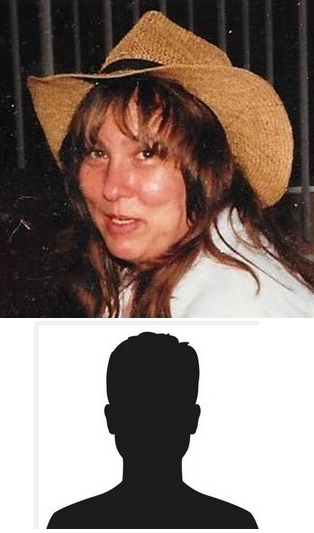
About Mary Ann Cornett NS7X (top)
MaryAnn was born in New Mexico, as were her aunts and uncles and cousins by the dozens. It’s a family thing. She moved to Iowa as a young bride, and she lost all connection with her family other than snail mail and long distance phone calls (which were limited to Sunday nights after eleven pm because that was when the long distance charges were cheaper).
When her sister-in-law became a ham (Marilyn Goodrich, KB5DA an Albuquerque denizen), she encouraged MaryAnn to get her license so the two of them could make a sked; It was a great idea because it gave Marilyn a good reason to get on the air, and MaryAnn would have a lifeline to “back home.” MaryAnn got her novice ticket in January, 1978. Unfortunately, MaryAnn became enamored with CW, and Marilyn was a phone op through and through.
Within a year or two, MaryAnn upgraded to Amateur Extra, and was very active in the National Traffic System. She was named an A-1 Operator, was a liaison between the Central Area Net and the Tenth Region Net, and was appointed as the first Section Traffic Manager of Iowa. Oh, and she also had a lot of fun.
Eventually, MaryAnn got to return to the Land of Enchantment. Alas and alack, Marilyn had become a silent key. Even though Marilyn and MaryAnn took different paths in ham radio, they each had a grand time learning, exploring, and exciting a few electrons through the years. It is indeed ironic that in spite of their best intentions, they never once were able to contact each other.
About Paul Bouthillier KBØWMA (bottom)
Paul ws first licensed as a Technician in May 1996 in Denver Colorado, Moved to Albuquerque, New Mexico in 2001. Upgraded to General in November 2023 and then upgraded to Amateur Extra in April 2024. His Ham Interests are HF through 440Mhz( Both Analog and Digital modes). He owns and operates a 24/7 YSF Reflector YSF Reflector ID: US-NM505-KB0WMA. He also operates on D-STAR, DMR, YSF, FT8, Wires-X, AllStarLink and EchoLink (openSPOT, Raspberry Pi Hotspots, etc.). He is a volunteer member of Bernalillo County ARES (BCARES).
Abstract:
Any who have an interest in ham radio, whether licensed or not, are welcome to attend this forum. Amateur radio is a whole lot of fun but it’s a technical field. Like all technical fields, it has its own jargon, which can be confusing to the new ham. Additionally, with the vast number of digital modes available, the new ham may be overwhelmed and experience a daunting feeling of “what have I gotten myself into?” This forum will be focused on the attendees’ queries and will be an open exchange of questions and answers with a goal of making amateur radio less puzzling and even more fun.
Applications of 3D Printing for Amateur Radio – Curt Lauman K7ZOO and Ron Jones K7RJ
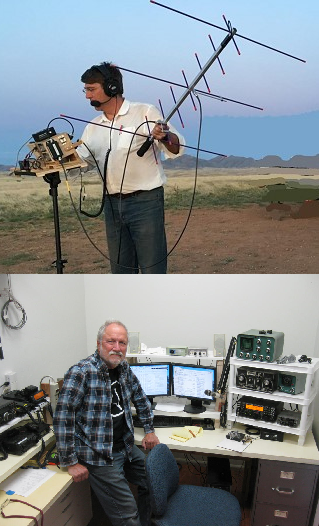
Curt Lauman K7ZOO (top)
Curt was first licensed in 1975 in Minnesota. He currently holds an Extra Class license and has explored many facets of the hobby. Over the last several years Curt managed and reinvigorated the University of Arizona club through facility and organizational improvements. He enjoys coaching and mentoring students; Morse code; portable operations (SOTA, POTA, satellite grid roving, contesting); construction of various antennas and ham radio widgets; and 3D printing.
Curt has worked as a physicist, design engineer, and process engineer (previously certified Six Sigma Blackbelt). For a few decades Curt pursued flying: he is a licensed private pilot in airplanes, and a commercial pilot in gliders, and held a glider instructor certification. Over the last decade Curt returned to amateur radio as his primary focus.
About Ron K7RJ (bottom)
Ron was first licensed in 1965 while in high school and has continued to remain active in the hobby. Not a real DXer nor a contester, but Ron has worked loads of DX plus frequently entered contests for fun, but never to win! He has chased lots of POTA and SOTA stations and a few satellites. On air he considers himself a jack of all modes and bands, but master of none. He has tried virtually every mode and every band from the VLF to microwave, including a 173 mile over the air contact using red light
(around 420 THz). As an electronic engineer and ham radio enthusiast, Ron’s main interest has always been in designing and building equipment including transmitters, receivers, antennas and numerous related projects used around the ham shack. A few years ago, he began using 3D printers in electronics and ham radio projects and
found them to be an indispensable aid in building ham station accessories. He has found that with an inexpensive, entry level printer and easy to use free software, virtually any ham will find countless custom projects that exactly fit their needs.
Abstract:
3D printing is a mature and robust technology, able to enhance many facets of amateur radio. This presentation will show you how to create many widgets and devices to augment your radio projects: moving from an initial concept, to a mechanical design, to printing your idea in a robust material. I will also discuss various 3D printer options at several price levels (from $100 to $1000), for hams that would like to explore or dive into 3D printing.
It’s a Humdinger OM ,It’s NOT your father’s radio – Bob Finch W9YA
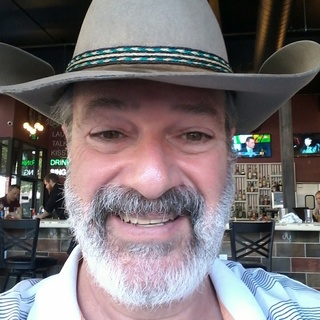
About W9YA
Bob built his first analog computer 53 years ago using M&Ms and lined notebook
paper. Since then he has been blessed to be able to continue exploring the
frontiers of engineering, computing, and rocket flight. Nominated to Who’s Who by
the then President of Purdue University for his pioneering work in
communications, Bob was also involved in developing the world’s first self-healing
computer operating system and is one of the “original seven” that formulated the
world’s most popular independent version of the Linux operating system
(ArchLinux). Bob lives and works in Albuquerque, New Mexico and still finds Ham
Radio to be fun and exciting after 50+ years.
Abstract:
A joyous romp through the latest and greatest Mobile and Handheld radio experience. Learn about the community developed operating firmware for the latest UHF/VHF radios. We will explore 20 different models of radios, from several manufacturers, ALL running the same software and codeplugs with the same screen display and operating enhancements ! The very best features and the least expensive hardware make this a seminar YOU WILL WANT to attend.
What the Antenna Said. Stuff we would all like to Know – Bob Finch W9YA

About W9YA
Bob built his first analog computer 53 years ago using M&Ms and lined notebook paper. Since then he has been blessed to be able to continue exploring the frontiers of engineering, computing, and rocket flight. Nominated to Who’s Who by the then President of Purdue University for his pioneering work in communications, Bob was also involved in developing the world’s first self-healing computer operating system and is one of the “original seven” that formulated the world’s most popular independent version of the Linux operating system (ArchLinux). Bob lives and works in Albuquerque, New Mexico and still finds Ham Radio to be fun and exciting after 50+ years.
Abstract:
If an antenna could communicate, what would it say to us ? Would the antenna tell us the SIX rules that will allow YOU to avoid being fleeced by the ever-present antenna-snake-oil salesmen ? …. A FUN-FILLED and SHORT presentation with plenty of time for Q and A. NOTE: New material !!
CB0ZA DX-pedition to Robinson Crusoe Island – Steve London N2IC
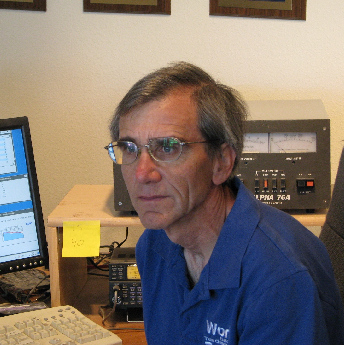
About N2IC
Steve London, N2IC lives near Silver City, NM and is a long-time HF contester. He has placed in the top-5 nationally and internationally in numerous contests, and has been a World Radiosport Team Championship (WRTC) competitor 7 times since 1996. For the past 10 years, Steve has spent his summers supporting radio communications on large forest fires.
Abstract:
A 7-person multi-national team went on a DXpedition to the Juan Fernandez islands last February. Juan Fernandez was #52 on the “most wanted countries” list. There were numerous logistical challenges, but the team persevered, making over 100,000 contacts.
New Mexico: Hot spot for SOTA, Summits On The Air – Fred Maas – KT5X
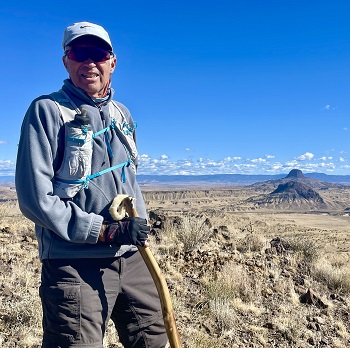
About KT5X
First licensed in 1958, age 12. He was the first from North America to qualify as a SOTA Mountain Goat, has done over a thousand activations, and presently serves as association manager for New Mexico. (He was the first American to operate from Ukraine, call sign US0Q, in 1992). Recipient of the E. T. Krenkle Award. Clubs: PVRC, FOC, CWOPS, CFO.
Abstract:
Summits On The Air; what is it, how to chase, activate, submit log, awards, basic equipment. You will hear from several of the prolific New Mexico SOTA activators and see photos from NM SOTA peaks.
New Mexico Frequency Coordination-How it works – Neil Addis – W7FED
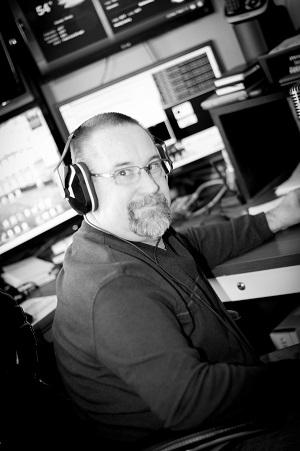
About W7FED
His electronics career started in the early ’70s with MSD ignition in El Paso, Texas, as employee #10, earning 95 cents an hour. His career included working with the U.S. Border Patrol, EG&G WASC, Boeing Defense & Space, Dell Computer, EF Johnson, and finally retiring in 2020 from Motorola Solutions as a Senior Systems Technologist in the Federal division. In 2012, he was awarded the prestigious Motorola “Galvin Masters Support Professional” for exemplary technical support to the U.S. Federal Government.
Abstract:
The presentation will give an overview of the New Mexico Amateur Radio VHF/UHF repeater frequency coordination, This presentation is geared towards current and potential repeater owners. Every Amateur radio operator should also attend. We will cover what is the NMFCC and explore why coordination is needed
Last updated 7/24/2024
